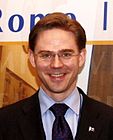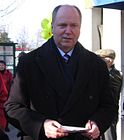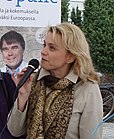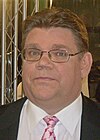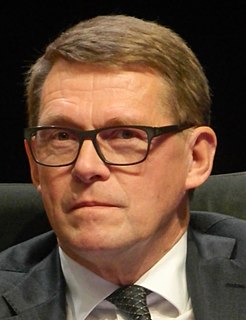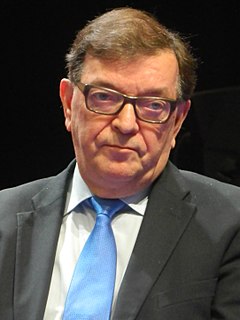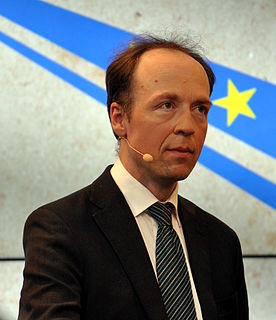| |||||||||||||||||||||||||||||||||||||||||||||||||||||||||||||||||||||||||||||||||||||||||||||||||||||||||||||||||||||||||||||||||
All 200 seats to the Parliament 101 seats were needed for a majority | |||||||||||||||||||||||||||||||||||||||||||||||||||||||||||||||||||||||||||||||||||||||||||||||||||||||||||||||||||||||||||||||||
| Turnout | 65.0% | ||||||||||||||||||||||||||||||||||||||||||||||||||||||||||||||||||||||||||||||||||||||||||||||||||||||||||||||||||||||||||||||||
| |||||||||||||||||||||||||||||||||||||||||||||||||||||||||||||||||||||||||||||||||||||||||||||||||||||||||||||||||||||||||||||||||
| |||||||||||||||||||||||||||||||||||||||||||||||||||||||||||||||||||||||||||||||||||||||||||||||||||||||||||||||||||||||||||||||||
 |
|---|
| This article is part of a series on the politics and government of Finland |
Executive
|
Legislative
|
Parliamentary elections were held in Finland on 18 March 2007. [1] Early voting was possible from the 7–13 March. The 200 members of the Eduskunta were elected from 15 constituencies.

Finland, officially the Republic of Finland is a country in Northern Europe bordering the Baltic Sea, Gulf of Bothnia, and Gulf of Finland, between Norway to the north, Sweden to the northwest, and Russia to the east. Finland is a Nordic country and is situated in the geographical region of Fennoscandia. The capital and largest city is Helsinki. Other major cities are Espoo, Vantaa, Tampere, Oulu and Turku.
Early voting is a process by which voters in a public election can vote prior to the scheduled election day. Early voting can take place remotely, such as via postal voting, or in person, usually in designated early voting polling stations. The availability and time periods for early voting vary among jurisdictions and types of election. The goals of early voting are usually to increase voter participation and relieve congestion at polling stations on election day.

The Parliament of Finland is the unicameral supreme legislature of Finland, founded on 9 May 1906. In accordance with the Constitution of Finland, sovereignty belongs to the people, and that power is vested in the Parliament. The Parliament consists of 200 members, 199 of whom are elected every four years from 13 multi-member districts electing 7-22 MPs using the proportional d'Hondt method. In addition, there is one member from Åland.
Contents
Election themes included a reduction of income tax[ citation needed ] and VAT on food. A proposal for a guaranteed minimum income was introduced by some parties. [2] The election debates were characterised by the high economic growth in Finland in recent years, which was thought to mean the government would have extra money to use on welfare services and transfer payments. Largest advertising budgets were spent by the Coalition Party (2,46 M€) and the Center Party (2,48 M€) with SDP far behind (1,37 M€). [3]
Guaranteed minimum income (GMI), also called minimum income, is a system of social welfare provision that guarantees that all citizens or families have an income sufficient to live on, provided they meet certain conditions. Eligibility is typically determined by citizenship, a means test, and either availability for the labour market or a willingness to perform community services. The primary goal of a guaranteed minimum income is to reduce poverty. If citizenship is the only requirement, the system turns into a universal basic income.
Altogether, 2,004 candidates were nominated, 799 of whom were women. About three-quarters of the candidates were nominated by parties currently represented in Parliament. The number of female MPs rose as 84 women were elected (formerly 75), now comprising a record 42% of the 200 MPs.
According to the newspaper Helsingin Sanomat , the number of advance voters rose in comparison with the previous election in 2003. After the Tuesday before the Sunday election, when advance voting ended, the voter turnout had already reached 29.2%, which was more than at the same point in the 2003 elections. However, total voter turnout, at 67.8%, fell short of the 2003 figure, 69.7%, reaching a new low since the 1939 elections.
Helsingin Sanomat, abbreviated HS and colloquially known as Hesari, is the largest subscription newspaper in Finland and the Nordic countries, owned by Sanoma. Except after certain holidays, it is published daily. Its name derives from that of the Finnish capital, Helsinki, where it is published.
Many prominent MPs decided not to stand in the election. Former Prime Minister (1995–2003) and Speaker of the outgoing Parliament, Paavo Lipponen left his seat, as did the fifth-longest serving minister of all time, Jan-Erik Enestam, and former Left Alliance party leader Suvi-Anne Siimes, who had harshly criticized her party after her resignation as chairman in 2006. Some former MPs made a comeback, former Finance Minister and presidential candidate Sauli Niinistö and the first European Green minister, Pekka Haavisto, former minister and National Coalition chairman Pertti Salolainen, former foreign minister Paavo Väyrynen and rock musician Pertti "Veltto" Virtanen being the most famous examples. Niinistö also set a record for the highest number of personal votes, 60,498, which is almost twice as high as the previous record, and with the application of the d'Hondt method used in Finland, as many as four other National Coalition candidates were elected to Parliament on the strength of these votes.

Paavo Tapio Lipponen is a Finnish politician and former reporter. He was Prime Minister of Finland from 1995 to 2003, and Chairman of the Social Democratic Party of Finland from 1993 to 2005. He also served as Speaker of the Parliament of Finland from 2003 to 2007 and was his party's nominee in the 2012 Finnish presidential election but received only 6.7% of the votes, making it the biggest defeat the Social Democratic Party has ever had in Finnish Presidential elections.

Jan-Erik Enestam is a Finland-Swedish politician from the Swedish People's Party. He has a degree from the Åbo Akademi university in Turku.

The Left Alliance is a left-wing political party in Finland.
The date of the election was near to the 100th anniversary of the first Finnish parliamentary elections, which were held on 15–16 March 1907, and were the first elections held under universal suffrage in Europe.
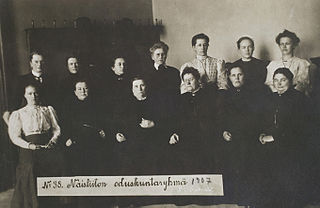
The concept of universal suffrage, also known as general suffrage or common suffrage, consists of the right to vote of all adult citizens, regardless of property ownership, income, race, or ethnicity, subject only to minor exceptions. In its original 19th-century usage by political reformers, universal suffrage was understood to mean only universal manhood suffrage; the vote was extended to women later, during the women's suffrage movement.

